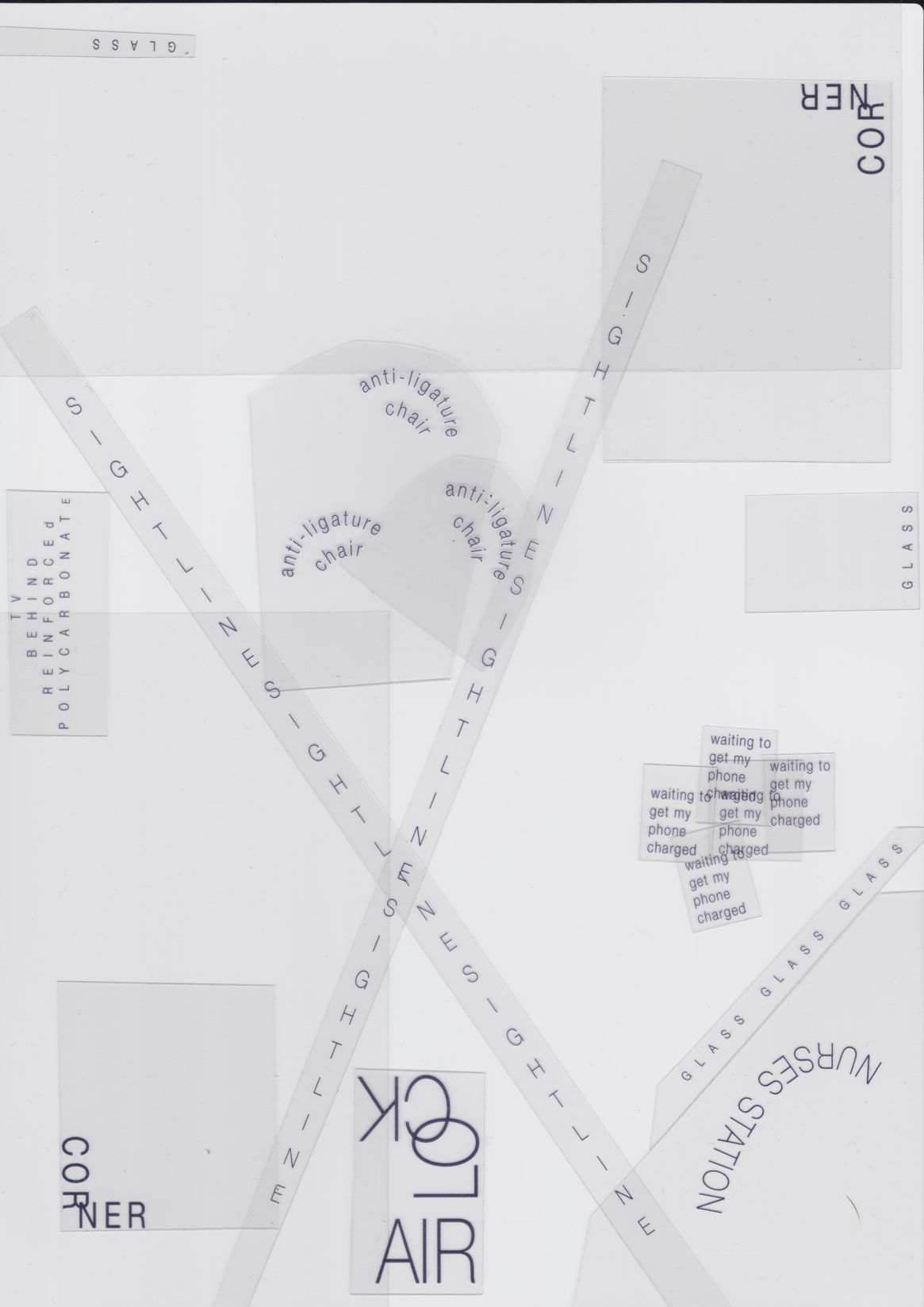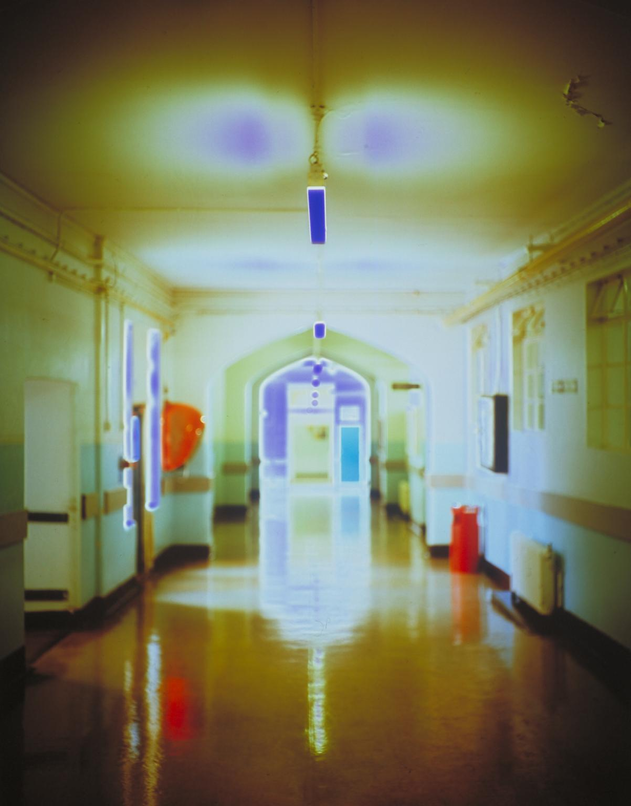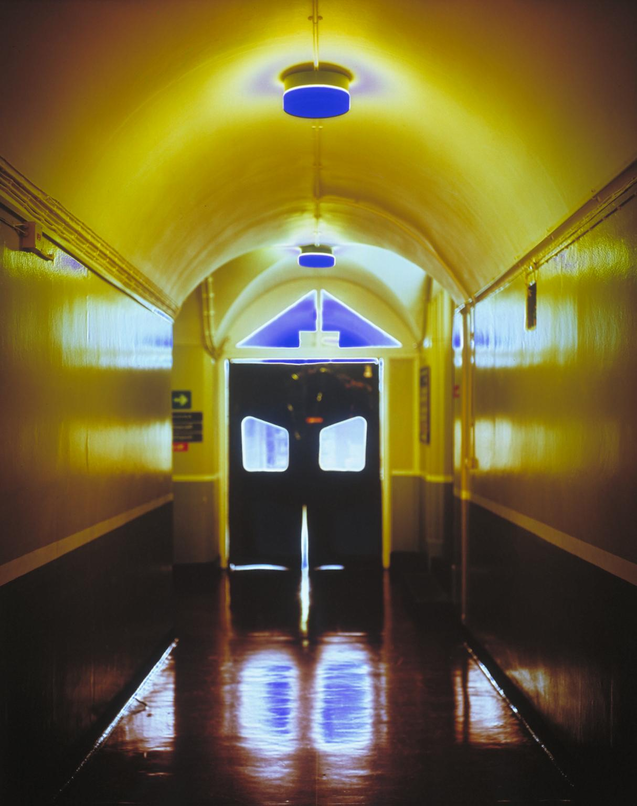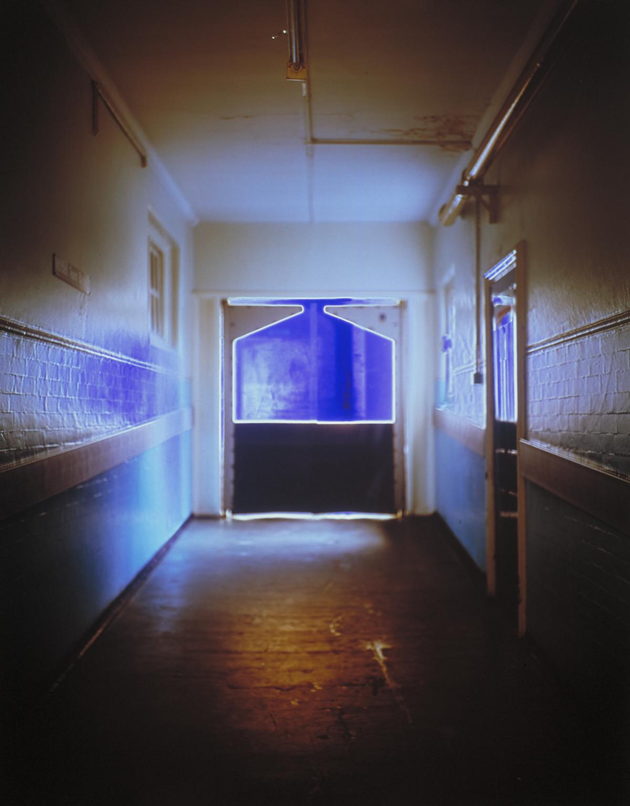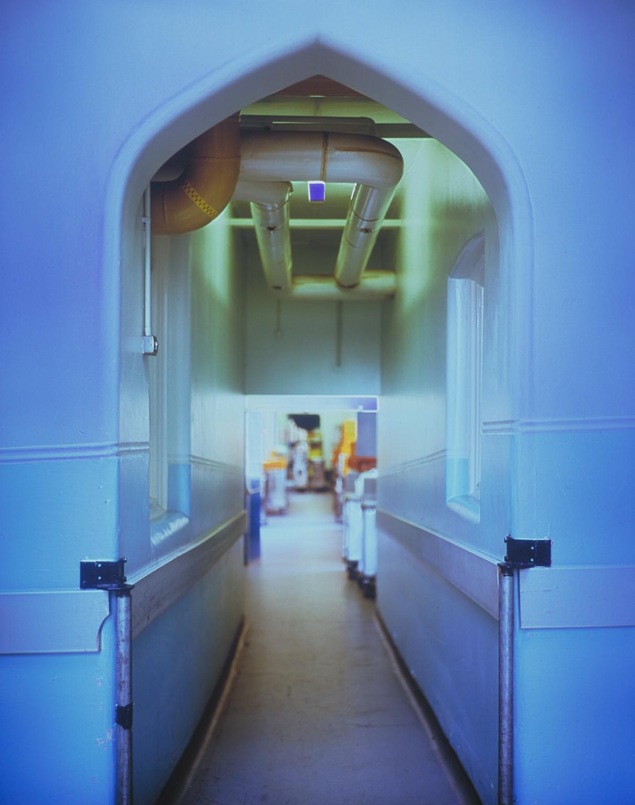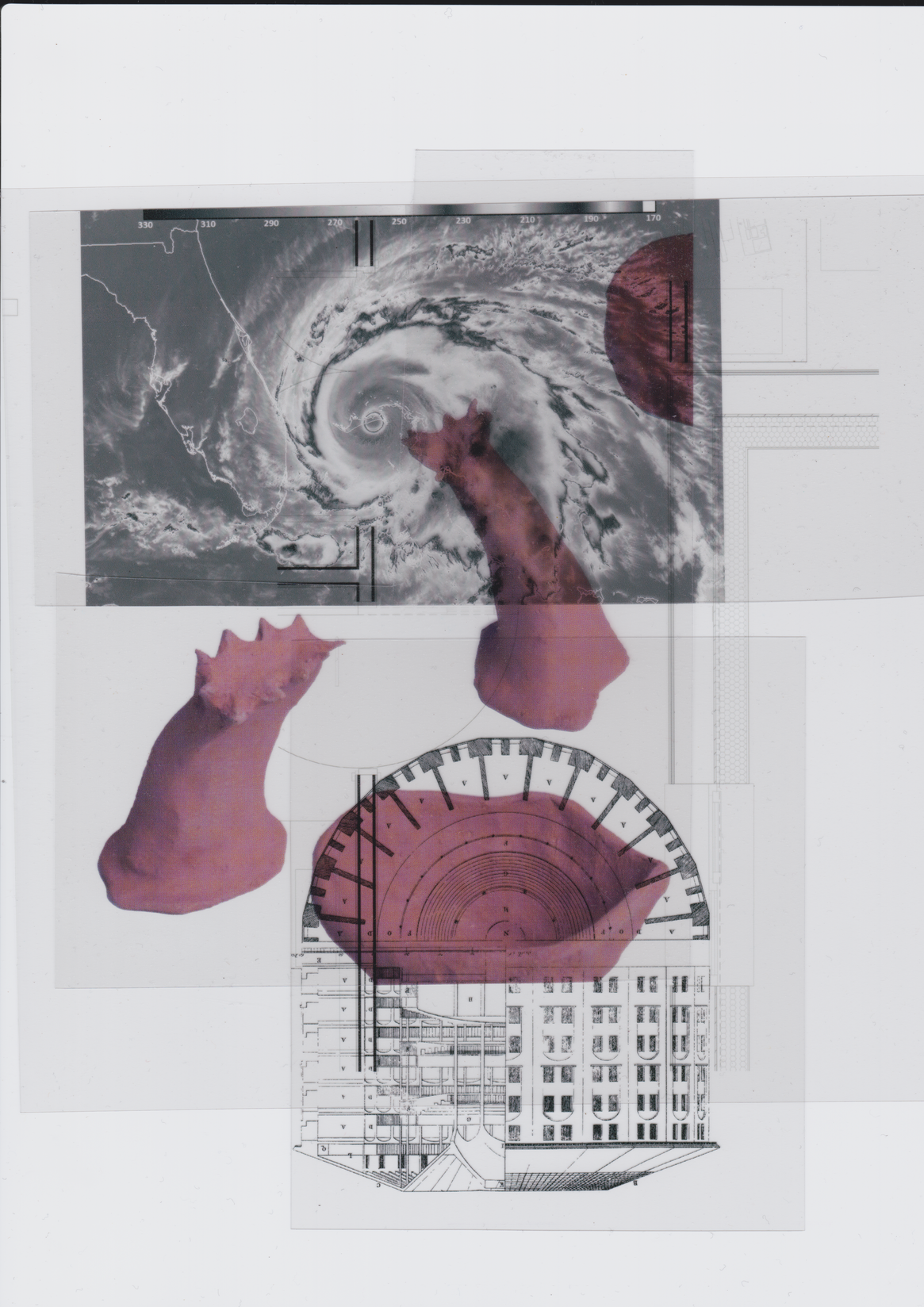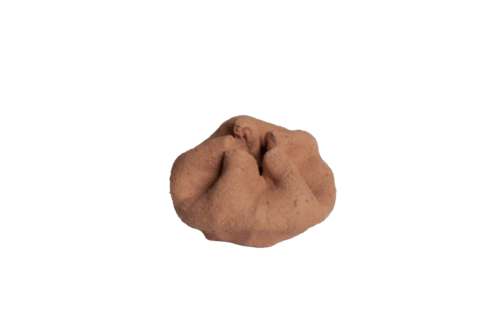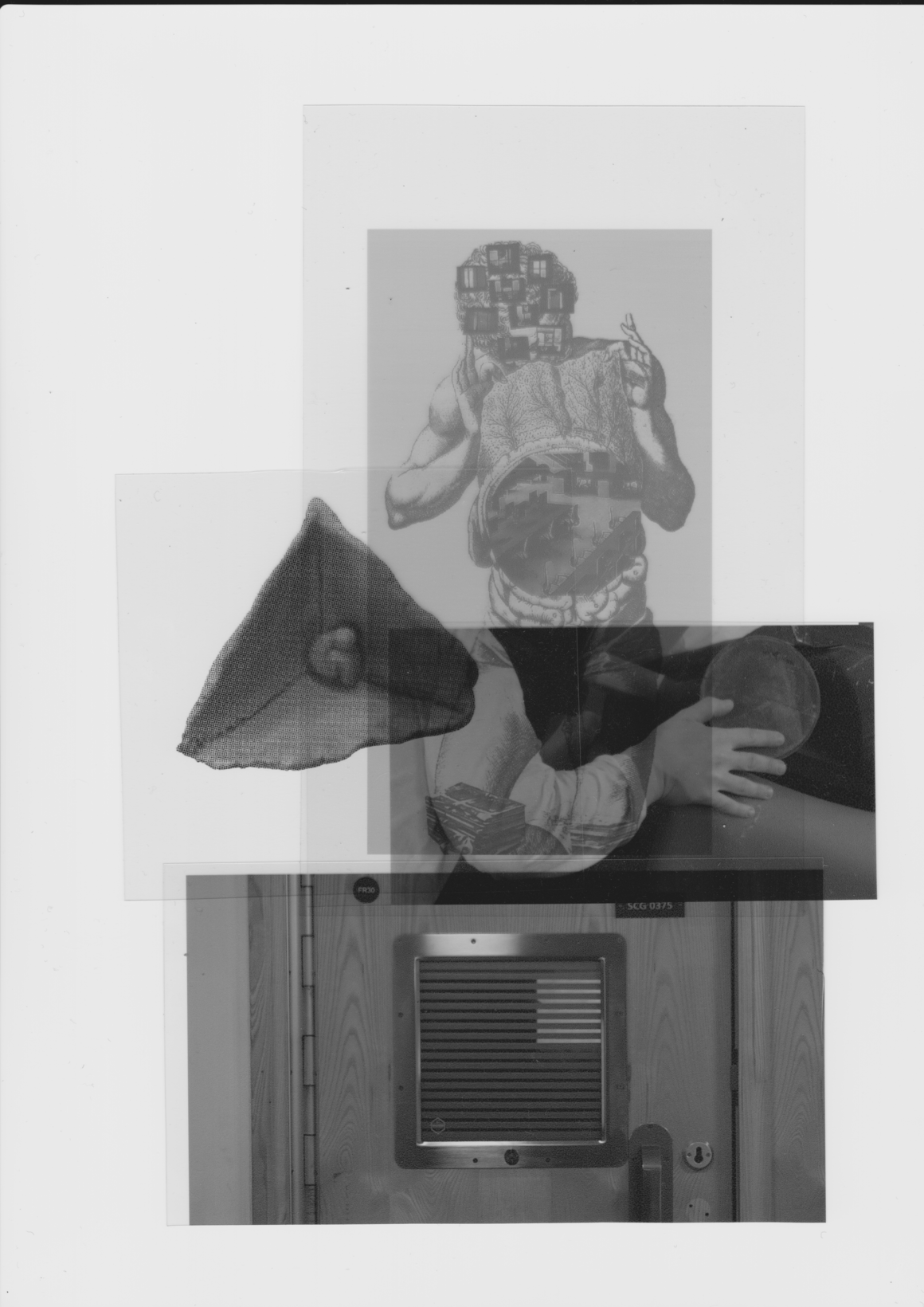1.1 Orientation Under Risk: Lines and Legibility
“Lines are both created by being followed and are followed by being created”
(Ahmed, 2006: 16).
“How do we bolster individual patient sense of safety rather than manage risk? You can feel it on the wards, you can sense the way in which it is informing everything about how the ward is run and managed, how the space is managed, how the environment is managed, how staff operate, the way patients are perceived”
(Kit, 2023)
Kit’s reflection captures the magnetic pull of risk within the locked psychiatric ward. Risk is not an incidental concern but the principle that organises space, routines, objects, and relations. It orients how patients move, what these movements convey, and how they are allowed to inhabit the clinic. Risk does not simply sit atop clinical practice; it quietly organises the textures of everyday life.
To understand how risk operates and becomes lived in psychiatric space, it is helpful to return to Sara Ahmed’s conceptualisation of orientation. For Ahmed, orientations are not simply positions in space but the patterned ways bodies come to face, move, and inhabit the world. Bodies “take shape” by following certain lines—paths laid down by history, habit, and power. These lines organise what appears familiar, what is within reach, and which actions or gestures are intelligible or legitimate within a given milieu. To be oriented is to move along the routes that have already been laid out; it is to inherit the directions sedimented by past arrangements and therefore is always political.
In the locked ward, risk functions as one of the strongest of these orienting forces. Participants described the ward as a space in which the “lines” of movement, dispositions, and behaviour were already mapped out: where one could walk without attracting suspicion; how one should sit to appear “calm”; which postures signalled compliance and which invited scrutiny. These were not instructions spoken aloud but lines already inscribed into the material and atmospheric conditions of the ward. Risk does not simply regulate behaviour; it organises the field of possible orientations. It narrows what is reachable; it constrains where one can linger; it shapes which postures feel “in line” with institutional expectations. To be “out of line” is immediately legible as a risk. In this sense, risk is not only a classificatory judgement, but it is also translated into a spatial directive.
Ahmed reminds us that orientations are sustained by repetition: “what is repeated over time is the requirement to follow the line” (2006: 16). This repetition becomes acutely visible in clinical settings, where routines sediment into the architectural and procedural fabric of the ward. Ahmed’s observation that what is reachable is shaped by proximity (2006: 56) becomes sharply visible here. Under risk logics, reach becomes tightly controlled: bodies learn not only where they are permitted to go, but how to hold themselves in anticipation of being seen. The result is what Ahmed calls “straightened paths,” where movement becomes predictable, linear, and continually accountable.
Erving Goffman’s classic account of the “total institution” provides a structural complement to Ahmed’s phenomenology. He observes that psychiatric life funnels individuals into “regularly recurring, imposed activities,” sequencing bodies into predictable paths: “one line after another, one inspection after another” (Goffman, 1961: 17, 66) becomes not merely a procedural fact but an orientation—one that inscribes bodies into a choreography of visibility and compliance. When read alongside Ahmed, Goffman’s sequencing appears as the literal manifestation of the lines patients must follow. Participants’ accounts repeatedly demonstrate how these lines are felt not only procedurally but atmospherically. Risk can be felt in the air, as several described; it recalibrates how bodies hold themselves, how they anticipate being seen, and how they navigate objects and space. Thus, risk is not a background policy but a directional force that compels bodies to align with institutional expectations, shaping both movement and meaning.
- How can this method (beside/layering/transparency) be translated to film?
- What happens to the clay objects now they are translated into another medium?
- Going back to the idea of the 'object', what does this mean in relation to a psychiatric 'object', people's clay 'objects' and the 'object' of an idea, feeling, atmosphere?
- How do I create a consistent structure or scaffolding within my findings that foreground clay objects and participant accounts whilst also retaining the flow of text?
1.2 Risk Atmospheres
“If you yourself are in an environment where there’s a lot of unpredictable, slightly frightening things happening, I actually felt like it was more risky to block that out. It felt like the safe thing to do would be to be more aware, even though it was distressing.” (Kit, 2023)
Across participants’ accounts, the awareness of risk is described as something that circulates; a pressure that moves through air, sound, and environment as much as through policy. Descriptions of hyper-vigilant listening, of staying alert to distress in the corridor, and reflections on the way risk “informs everything about how the ward is run and managed,” (Kit, 2023) evoke an environment that seeps inward. Anxiety and a sense of being on high alert becomes contagious, moving between staff and patients, producing what might be thought of as a shared internal weather. In this climate, to breathe is to participate: to inhale the ward’s tension, to absorb its rhythms of anticipation and restraint. Air itself becomes a regulatory medium, carrying the atmosphere of surveillance and fear through its circulation systems: a literal and figurative infrastructure of control. In the accounts of participants, the ward functions as a closed climate: one that sustains itself through the constant exchange of anxious air, a risk system that is breathed in and out, perpetually renewed by those within it.
Kit’s reflections extend this sense of atmospheric risk into the acoustic register of the ward. The ward, they note, produces a “sort of assault on the senses” through alarms, closing doors, TVs blaring, staff pacing, keys jangling, and clashing sound sources that “you have so little ability to block out.” In this acoustic density, risk travels through reverberation. “The sounds of patients in distress… were very alarming and frightening to listen to,” they explain. Hyper-vigilance becomes rational: “It felt like it was more risky to block that out… the safe thing to do would be to listen.” Here, sound is not merely background noise; it is a conduit for risk, a medium through which threat and anticipation circulate. The objects and material conditions of the ward channel and amplify these conditions: they contain, reverberate, and funnel atmosphere back onto the body.
Surveillance is not a single act of looking but moves through sound and expectation. Kit’s attention to noise, to the constant rhythm of staff movement and mechanical openings, turns risk into a kind of pressure system: a state of vigilance that gathers and releases around the body. They adapt through posture and stillness, curling into corners, as depicted in their clay sculpture, to lessen exposure. In this way, Kit’s testimony shows that the ward’s risk atmosphere operates as a field of sonic humidity: thick with repetition, punctuated by alarms, shaping breath, gesture, and endurance. The way that the body adapts to this environment will be explored in Chapter Two.
The concept of pressure refines this diffuse understanding of atmosphere by locating it in the body. While atmosphere captures an overall affective aura and texture of the ward, pressure locates these sensations in a tangible and embodied register. It draws attention to the way air, sound, and affect circulate through institutional space, creating a kind of vacuum. In my own experience of entering through the sealed, locked door of a ward, this pressure registered as a palpable shift in density: the air seemed to thicken, the atmosphere to contract. It produced a sensation akin to crossing into a different altitude, where the body must recalibrate in order to breathe and move. Participants echoed this felt transition. Cris described “the pressure in the room” as something tangible, a weight that organised how people moved and interacted. Kit spoke of a spatial breathlessness: “a shelter and a cocoon, but also a prison” that was simultaneously secure and suffocating.
This pressure is not metaphorical. It is architectural, sonic, and material. It gathers in corridors where alarms echo, bouncing from hard, flat, non-absorbent surfaces; in communal lounges where considered sightlines increase exposure; in bedrooms where the air stills because windows cannot fully open. Pressure condenses in the material infrastructures of the ward — the doors, vents, furniture, fabrics — which hold the atmosphere in place.
1.1.1.1 Air Conditioning
The idea of circulating air recalls Peter Sloterdijk’s notion of spheres as the immunological environments that sustain and regulate collective life. The psychiatric ward, in this sense, constitutes an artificial sphere, a microclimate sealed for safety yet thick with its own affective weather. For Sloterdijk, every social formation manufactures its own interior climate, an atmospheric infrastructure that maintains life by filtering what may enter and what must remain outside. He uses the term air conditioning not simply to describe a technical system but as a metaphor for the regulation of collective breathing; a way societies manage exposure, permeability, and immunity. The ward exemplifies this logic: its air circulation, observation routines, and protocols for movement all work to stabilise a fragile ecosystem of treatment and control. Yet, as Kit and Cris describe, this enclosed climate does not simply shelter; it pressurises. The same mechanisms that promise protection also produce a dense atmosphere in which risk and safety circulate together, inseparable in the shared air.
Gernot Böhme’s writing on atmospheres as a “spatially extended feeling” (1993: 114) helps to clarify how this air becomes charged. “Atmospheres,” Böhme writes, “belong to the sphere of coexistence between person and environment” (2017: 2–3). It is felt rather than measured; sensed through the body before it is consciously recognised. Spaces and materials generate atmospheres through light, sound, texture, spatial proportion, and temperature. Architecture, design, and institutional routines therefore act as producers of atmospheres. In this sense, the psychiatric ward can be understood as an atmospheric formation, where the textures of sound, light, and air — the repetition of alarms, pace of footsteps, and controlled ventilation — generate a spatially extended mood of risk.
1.1.1.2 Utilising atmosphere
Atmosphere, in this account, is a technique of governance. It shapes bodies not through saturation: a subtle but pervasive density that conditions attention, breath, and gesture.
Participants often spoke of this in embodied terms. Cris described “the pressure in the room” as something you could feel, a kind of atmospheric weight that organised how people moved and interacted. Another referred to the constant background noise of alarms and doors, which “you stop noticing but never really stops.” These observations reveal how pressure manifests as a mode of governance, a regulating presence that disciplines by techniques employed through the environment. This depiction sits somewhere between Foucault’s architectural surveillance of the panopticon, and the affective economies Sara Ahmed describes, where emotions “stick” (2010: 30) and circulate between bodies, producing shared orientations of fear, safety, or mistrust. If the panopticon operates through visibility, pressure operates through saturation: an invisible but palpable density that holds everything in suspension.
Cris’s narrative captures the permeability between atmosphere and interiority. They describe the ward as a place where “you’re always ready for something. You never really relax.” (2023) Sound travelling through walls; staff footsteps signal surveillance; a pervasive tension in the air. Even resting becomes defensive. Their clay spikes — “like natural sea urchins… visually appealing but also hurt things” — translate this atmospheric vigilance into form.
Yet it is Cris who also describes the rare relief of atmospheric rupture. Lying on the courtyard bench, they would stare at the sky:
“It was like my way out of that environment was to just stare at the sky.”
“It was so beautiful… but I guess it comes from a place of real sensory deprivation… it was meaningful.” (Cris, 2023)
The contrast between the compressed indoor air and the open verticality of the sky makes pressure perceivable. Looking upward becomes a small disorientation: an orientation toward elsewhere. Here, pressure operates not only as containment but as a field against which resistance, however subtle, can emerge.
“I guess [the ward] makes you feel like you're in sort of like a purgatory, sort of like no man's land of being separate from reality and life, I guess, like. And I don't know, I think things can feel pretty bleak when you have no exposure you can't forget about those things that are small things on a day to day basis where you're walking outside and think, Oh, it's such a nice day, or like, Oh, look at that flower. Or like, look at the sky, it's so nice. It's like you forget those things that actually influence the way that you feel in yourself and like, feeling connected to something else. Yeah. And like, the first time I was on a ward, it was during COVID, so I didn't leave the ward for three and a half months, which was, yeah, I felt like I was just in like not anything. I don’t know, just blank.” (Cris, 2023)
1.1.1.3 Risk Atmosphere as Relational Pressure
What these accounts collectively demonstrate is that risk atmospheres are co-produced by:
· the air (sealed, recycled, heavy)
· the soundscape (alarms, keys, shouting, TV)
· the spatial arrangements (corridors, corners, observation points)
· the objects (curtains, doors, furniture, beds)
· the movement of bodies (staff pacing, patients queuing)
· the institutional protocols (checks, alarms, restricted visibility)
Risk becomes a circulatory condition, a pressure system that moves through materials, and through bodies, orienting them toward vigilance. In this atmosphere, to breathe is to participate, to take in and respond to the ambient tenor of risk.
The next section, Risk Materialisation, examines how these atmospheres harden into objects, routines, and spatial practices, shaping not only how risk is sensed but how it becomes materially enacted.
1.3 Risk Materialities
Air-lock
Before turning to the ward’s objects themselves, it is necessary to linger at its threshold. Locked psychiatric wards are sealed both by protocol and by architecture. Entry requires passing through an air-lock door system: two heavy doors that never open at the same time, producing a controlled threshold that regulates not only movement but atmosphere. In architectural terms, an air-lock is designed to stabilise interior conditions by preventing the exchange of air, maintaining pressure, and securing a closed climate.
Crossing that threshold is a recalibration. The air becomes denser, the light flattens, and the body attunes itself to a climate in which feeling, vigilance, and atmosphere are held in suspension. These sealed environments are not unlike other enclosed climates, spaces where the air is intentionally thickened or altered so that change happens at the level of the body. Two spaces that I have interacted with recently and come to mind are the sauna and the terrarium. In a sauna, heat dilates the skin and slows breath; in a terrarium, humidity sustains life that would otherwise wither. Each sealed environment has its own conditions of liveability, its own thresholds of tolerance. (reference Judith Butler here?) The psychiatric ward produces a different kind of enclosure: not warm, not moist, not regenerative, but pressurised—a climate in which bodies must adapt in order to remain legible, safe, or simply unaffected.
Thinking with Ahmed, the airlock can be understood as a line of orientation: a hinge between two worlds, forcing the body to turn toward the institutional line and away from external trajectories. Once crossed, one inherits the directionalities of the sealed environment, its tempos, its rhythms, its atmospheric norms. The sealed space conditions what is breathable and what must be held in, structuring how bodies anticipate, attend, and adapt.
“I made some sort of vessel that was, that was almost compressed in and feeling of like stressed and closed” (Anna, 2023)
The notion of a sealed space is echoed within the clay archive: Anna’s sealed clay vessel, made during the container exercises but adapted so the top edge enveloping in on itself to create a closed form with a hollow interior. The clay edges of the container meet each other to form a seal. The pot as Anna describes it is “almost compressed in” with the feeling of being “stressed and closed”, which links to her experience of the ward as a double enclosure: “locked in” by the building and “enclosed in yourself” (Anna, 2023)
a sense of the ward as airtight, protective, isolating. This gesture links the climatic enclosure of the ward to the psychic enclosures formed under risk: sealed spaces within sealed spaces.
This notion of sealed spaces also translates to elements in my practice using moving image and layered image collages. What is sealed within the frame?
Notes:
LINK SEALED SPACES TO PRACTICE
what is sealed in the frame of a film?
what is sealed in the transparency collage during scan?
Techniques of material governance
Quote used in situating research part II – here I should simply refer to it and pick out language that is relevant. 7.23 All fixtures and fittings such as window and door furniture, door closers and hinges, taps, showerheads and coat hooks should be anti-ligature, robust and able to withstand sustained attack, and meet national safety requirements. In general, all fixtures and fittings should be specified, manufactured, fitted and maintained to help prevent the possibility of accidents, misuse or use as weapons or to aid self-harm. Local risk assessment is necessary, with fitting according to manufacturers’ instructions. Projections, level surfaces that could form hook points, and horizontal rails or similar are also to be avoided.
(Health Building Note 03-01: Adult acute mental health units)
Objects are not passive furnishings; they are techniques. Foucault’s microphysics of power (1977: 26) is instructive here: power operates through a dispersed field of “minor techniques” , or “force relations”, that infiltrate gestures, postures, and orientations. The ward’s material techniques include:
- Sightlines: long, unobstructed passages; windows in doors; staff-controlled blinds
- Furniture: wipe-clean surfaces; impact-resistant chairs that enforce upright posture
- Doors and handles: weighted, timed, alarmed
- Curtains: translucent, non-weight-bearing, denying privacy and softness
- Lighting and surfaces: bright, reflective, hard; resistant to modification
Material techniques - what does the materiality of the ward do - what techniques does it employ to hold this sphere, vacuum, pressure
These features collectively produce a material choreography of surveillance. Even when staff are not visible, the environment itself communicates the possibility of being seen. As Kit notes, “You can sense you’re being perceived… where are you on the risk scale? It literally dictates whether you have freedom of movement.”
Risk becomes material; felt in posture, in the way one sits or stands, in the tightening around observation windows.
KATE
on hyper vigilance
“The sounds of patients in distress… were very alarming and frightening to listen to. It was difficult because I also felt like I had an ambient feeling about whether or not I wanted to block the noise out… from a kind of hyper-vigilant feeling I also wanted to listen in case I needed to know what was happening.”
“If you yourself are in an environment where there’s a lot of unpredictable, slightly frightening things happening, I actually felt like it felt a bit more risky to block that out — it felt like the safe thing to do would be to be more aware, even though it was distressing.”
KATE
on risk atmospheres
“How do we bolster individual patient sense of safety rather than manage risk? You can feel it on the wards, you can sense the way in which it is informing everything about how the ward is run and managed, how the space is managed, how the environment is managed, how staff operate, the way patients are perceived”
“You feel over time that you're being perceived as, you know, where are you on the risk scale? Okay, well, you're quite high up on the risk scale so there's going to be a whole load of mitigations put in place to attempt to manage that. I mean, it literally will dictate whether you have freedom of movement, whether you get leave.”
KATE
on acoustic density
“I think one of the things that you really notice about ward environments is how noisy they are and I found that really… I’m quite sensitive to sensory stimulation. So the sort of assault on the senses really stood out to me.”
“It’s not only that there’s lots of noises but you have so little control over those sounds and so little ability to block them out. So there’ll be staff pacing up and down the corridor… talking, jangling of keys… TV usually on in the lounge all day… or there’s a radio on in a room where no one was sitting… you’d have this kind of clashing noises.”
Cris’s account renders the psychiatric ward as an environment where surveillance and atmosphere converge, interlocking systems that shape perception, gesture, and relation. Risk, in their description, is both seen and felt: it is visible in observation windows, cameras, and staff movement, but it also saturates the air as a pervasive tension.
CRIS
on sky
“It was like my way out of that environment was to just stare at the sky.”
“There were moments where I just thought, like, it’s so beautiful, like the sky, but I guess it comes from a place of real sensory deprivation that I had, so that was really meaningful."
CRIS
on their clay objects
“I was also thinking about sort of like the natural sea urchins and stuff like that… some of those creatures, they’re very visually appealing but also kind of consume things or hurt things.”
JULIA
“You’d wake up, queue for meds, sit in the lounge, eat, wait, go back to bed. It was like a script you couldn’t change.”
LINES & ORIENTATIONS
“Lines are both created by being followed and followed by being created.” (Ahmed, 2006: 17)
“Orientations are about how we begin, how we proceed from ‘here’.” (Ahmed, 2006: 15)
[THE WORLD]
│
│ ←→ shaped by power, history, repetition
│
┌──────────────┐
│ LINES │
└──────────────┘
│
│ (habits, genealogies, social routes)
│
▼
[OBJECTS & ARRANGEMENTS]
(what is in reach / familiar)
│
│ (extend lines of the past)
│
▼
[THE ORIENTED BODY]
(facing, reaching, directed toward)
│
│ (where one “finds oneself”)
│
▼
[ORIENTATION / COMFORT]
- alignment with existing lines
- feeling “at home” in space
- straight, normative trajectories
│
│ ← tension / deviation →
│
▼
[DISORIENTATION / QUEERNESS]
- being “out of line,” “out of place”
- exposing hidden structures
- making new lines & orientations
- unsettling comfort / opening potential
